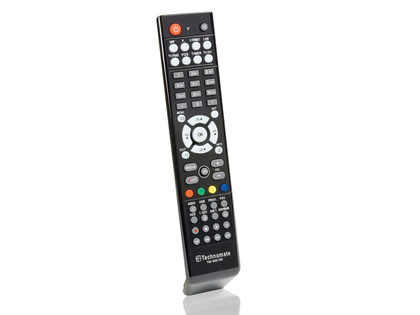TechRadar Verdict
Pros
- +
Strong AV performance
- +
Powerful EPG
- +
Linux-powered networkability
Cons
- -
No timeshift or blind search
- -
No native support for internal SATA HDD
- -
User interface can be clumsy
Why you can trust TechRadar
The TM-800 HD is Technomate's most affordable Linux-based receiver and our review unit came pre-installed with a variant ('IQ') of the Enigma 2 firmware 'image' that you'll find on many competing Linux-based products like the Dreambox.
At least four other 800 HD-compatible images are also available. Dealers can usually install the one of your choice.
The hardware it runs on, which is based on an NXP 'jungle chip', is well specified. It's HD-capable, the single Sharp tuner supporting DVB-S2 channels. A card slot (capable of emulating various CAMs, with the appropriate Enigma plug-in) is present, although there's no conditional access slot.
Among a healthy sprinkling of connectivity are HDMI, USB and, of course, Ethernet – an internal Wi-Fi upgrade is available as an option. Also optional is PVR functionality. The 800 HD will record onto USB media if you're not prepared to install an internal 2.5-inch drive.
The 800 HD has been available for over a year now, and during that time was plagued by problems (at one point there was a product recall). Although now stable enough to be given the Wotsat treatment, it's still not perfect, although Technomate assures us that a major new firmware revision is in the wings.
Build and connectivity

Other than a huge blue-backlit joypad, the most prominent feature of this pleasantly styled midi-sized receiver's front panel is an informative alphanumeric display. Channel names or status information scroll along merrily, and the display also acts a clock when in standby. Under this are a series of basic controls.
A pull-down flap, meanwhile, conceals a USB port, a card reader and blanked-off CI slot. The remote control has plenty of useful 'shortcut' buttons – available functions include satellite selection, recordings, timer, video modes, multimedia and positioner – but its feel leaves much to be desired.
Sign up for breaking news, reviews, opinion, top tech deals, and more.
The buttons have a rather lumpy feel to them and sometimes catch on the casework. Some of the smaller ones are awkward to operate, too.
On the rear panel is a healthy sprinkling of connectivity. Underneath its LNB input you'll find a loopthrough output. Next to these are an aerial input and output for the onboard UHF modulator, which can be surprisingly useful for simple multi-room reception.
The 800 HD is well prepared for better-quality options, though. A pair of Scarts and a HDMI port are complemented by component and composite outputs. Audio outputs are optical digital and stereo analogue phonos. A couple of bungs cover the holes into which sockets for the aerials associated with an optional Wi-Fi adapter (£50 though some dealers are currently bundling it with the receiver) would be mounted. A second USB port, RS232 port and a modem jack round off the data socketry.
Talking of which, there's a catch if self-contained PVR operation is needed. To accommodate an internal HDD, which screws into a bracket located just behind the front panel, you'll require a SATA-to-USB converter. This is wired internally to the main board instead of the front-panel USB socket, which is as a consequence no longer available. It is disappointing that no SATA interface is built in.
The irony is that the beefy internal power supply – designed with DiSEqC mounts in mind – has a SATA power cable trailing from it.
Setup

A dedicated system menu is provided for basic receiver configuration. In AV settings the output mode (PAL/50 or NTSC/60) and resolution can be specified. For HDMI, all modes from 480p/576p to 1080p are available.
Another menu configures networking – separate categories cover Wi-Fi (if fitted) and Ethernet. If you're using Wi-Fi, WEP, WPA or WPA2 encryption can be specified. To ease network configuration, DHCP is supported. There's also a network wizard, but attempting to use this always caused the receiver to crash.
Alternative skins, which customise the appearance of the user interface, can be chosen. Other menus look after parental controls and languages and video fine-tuning (aka a test-pattern generator).
Two basic setup modes – simple and advanced – are available. The first is ideal for basic systems – notably those using a single dish/LNB or a DiSEqC 1.0 setup. For the latter, each of the four positions can be assigned to a specific satellite.
In the 'advanced' menu, far more parameters (notably relating to LNB type and DiSEqC) are available. In addition to 1.0, this receiver supports 1.2 and USALS – all of the usual controls for dish movement are supported via the handset's coloured buttons. Hardware blind search is missing, although we might eventually see it in software 'plug-in' form.
Searching can be taking place on single transponders or complete satellites – all channels, or just free ones, can be found and stored. FEC and symbol rate can be specified for manual searches, but you can't enter PIDs.
One of the plug-ins present on the review sample was a satfinder, which displays larger-than-usual strength/quality bar graphs for a user-specified satellite/transponder. It's a shame that signal level isn't represented by an audible tone which could aid dish installation.
